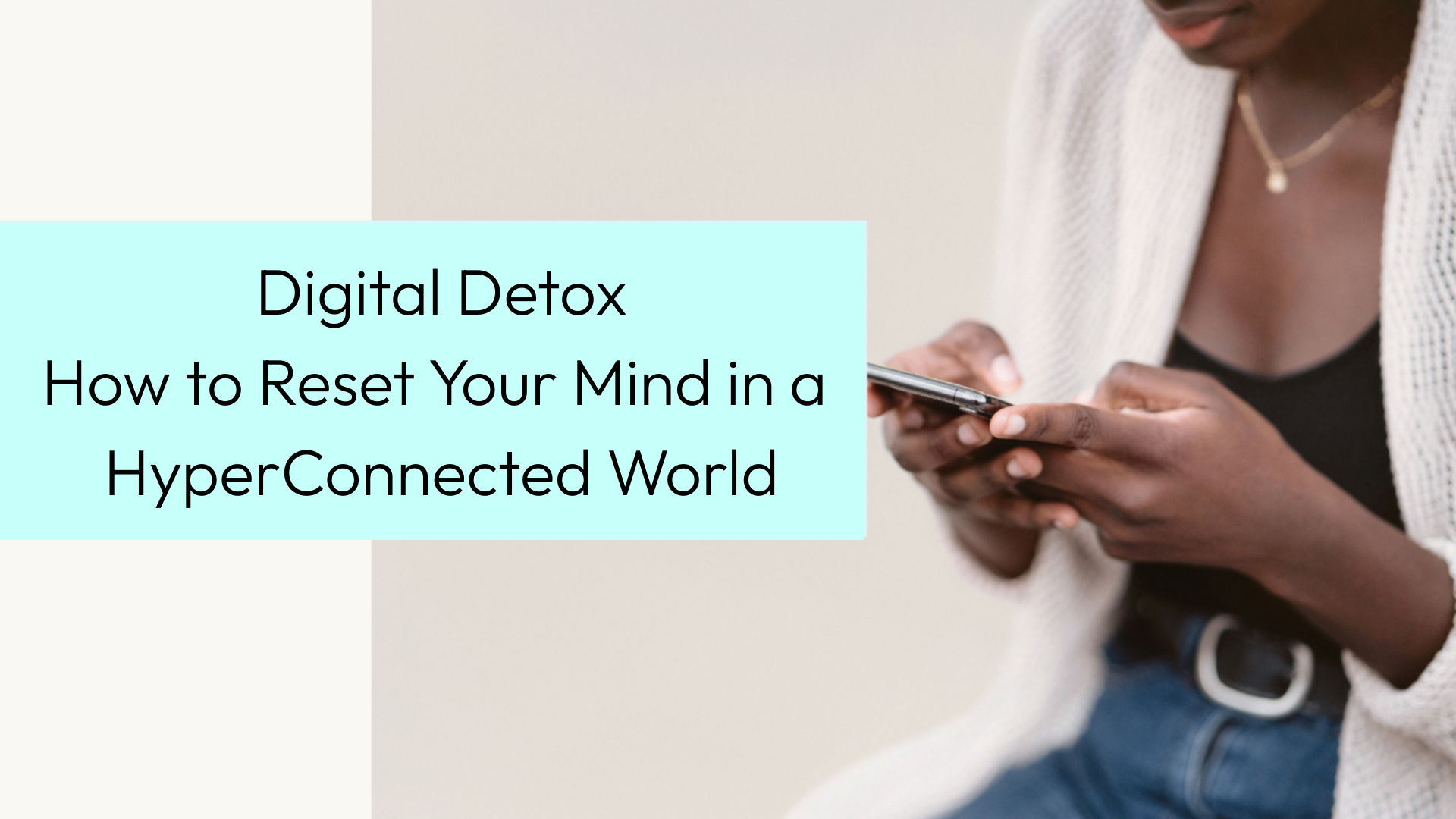In today’s hyper-connected world, it’s easier than ever to stay plugged in, whether it’s through social media, work emails, or constant notifications. However, constant digital stimulation can lead to mental exhaustion, stress, and burnout. A digital detox—a period where you unplug from digital devices—can help reset your mind and improve your well-being. Here’s how you can step back, reset, and reconnect with yourself.
1. The Impact of Constant Connectivity
We live in an age where staying connected is the norm. But constant connectivity can have adverse effects on both our mental and physical health:
- Increased Stress: Social media comparisons, work emails, and constant notifications can raise anxiety levels.
- Reduced Productivity: The constant switching between tasks reduces focus and hampers productivity.
- Sleep Disruption: Exposure to blue light from screens can interfere with your sleep patterns.
- Decreased Attention Span: The constant bombardment of information can make it harder to focus for extended periods.
2. What is a Digital Detox?
A digital detox involves consciously taking a break from digital devices, mainly social media, and unnecessary screen time. It allows your brain to rest, reset, and recalibrate without the pressure of staying constantly engaged online.
Benefits of a Digital Detox:
- Improved Mental Clarity: Freeing yourself from digital distractions helps improve focus and cognitive function.
- Better Sleep: Reducing screen time, especially before bed, helps regulate your sleep cycle.
- Enhanced Relationships: Taking time away from your devices lets you focus on meaningful, face-to-face connections.
- Reduced Anxiety: Less exposure to negative news or social media can reduce stress and anxiety.
3. How to Do a Digital Detox
A successful digital detox involves more than just turning off your phone for a few hours. Here are some strategies to make the most of it:
1. Set Clear Boundaries
Decide on a detox duration—a weekend, a week, or just a few hours daily. Avoid social media, email, and unnecessary screen time during this time.
2. Create Tech-Free Zones
Designate areas in your home (like your bedroom or dining table) as tech-free zones to promote quality time offline.
3. Unplug Before Bed
Avoid using screens at least 30 minutes before sleep to help your mind unwind and reduce blue light exposure.
4. Engage in Offline Activities
Use the time to read a book, practice mindfulness, walk in nature, or engage in creative hobbies that don’t involve a screen.
5. Disconnect with Purpose
If you’re feeling overwhelmed, take longer breaks from specific platforms—like deleting apps or turning off notifications.
4. Long-Term Benefits of Regular Digital Detoxes
While a digital detox may initially seem challenging, the long-term benefits are worth the effort. Incorporating regular digital detoxes into your routine can help create a healthier relationship with technology.
- Better Work-Life Balance: You can set better work and personal life boundaries.
- Improved Creativity: Taking breaks from constant digital input allows you to recharge and think more clearly.
- More vigorous Mental Health: A healthy balance of screen time and offline activities can reduce burnout and help maintain emotional stability.
5. Conclusion
In a hyper-connected world, disconnecting and resetting are more critical than ever. A digital detox allows you to reclaim your mental clarity, improve your well-being, and foster more meaningful connections in the real world. Integrating regular digital detoxes into your routine can build a healthier, more balanced relationship with technology.

